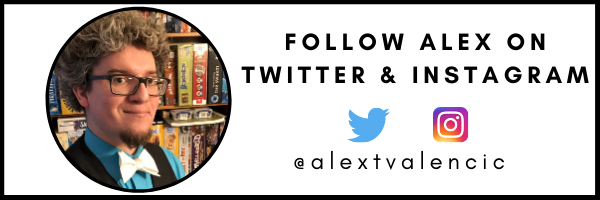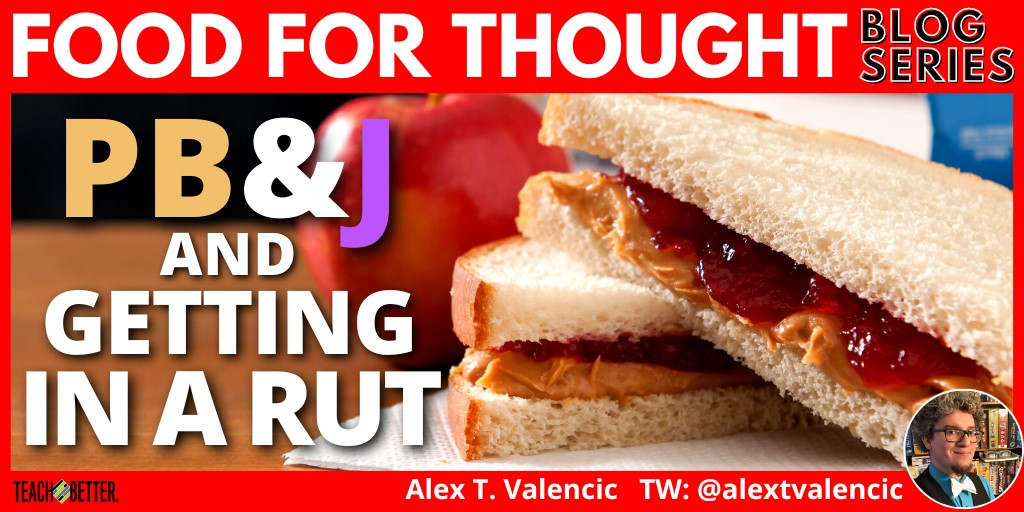TL;DR:
- Routine and order don’t mean doing the same things the same way every day.
- We can provide voice, choice, and possibility within established structures.
- Going back to basics is just as important as pushing the envelope.
I love peanut butter and jelly sandwiches.
Nearly every day of elementary school, my lunch consisted of the same basic elements: a peanut butter and jelly sandwich, an apple, a carton of milk, and a Little Debbie snack, usually an oatmeal cream pie or a fudge round. The meal was simple yet nutritious and, growing up in a family with five older brothers and two younger sisters, it was an economical way for my parents to make sure we were provided for.
Years later, I found myself living away from home for two years, volunteering my time as a traveling lay minister for my church. At the age of 19, I didn’t know much about preparing meals for myself, so I relied on the simple staples I knew from my childhood. Breakfast each day consisted of a bowl of Honey Nut Cheerios and a glass of orange juice. Lunch was two peanut butter and jelly sandwiches, a couple of cookies, and a bottle of Powerade.
Every day. For almost 18 months. The same thing for breakfast and the same thing for lunch. (Dinners were provided by members of the church community.)
There was absolutely nothing wrong with this. My meals were simple and inexpensive but also nutritious and filling.
About a year and a half into this two-year journey of mine, I shared an apartment with a guy who liked to experiment with his meals. Breakfasts became more elaborate and lunches more varied. Sometimes we would pick up random items from the store just to see what we could do with them, other times we had a specific plan in mind. Meals were still inexpensive and still nutritious, but they also became not just filling but also satisfying.
Meal prep became less of a mindless habit and more of an organised experience.
Upon returning home, I returned to my university studies and began working again for the university’s dining services. While doing so, I was offered a unique position as the eggs-to-order cook for one of the dining halls. Setting aside my blue polo and visor, I donned a white cook’s jacket and hat and spent a few hours each morning crafting custom omelets and eggs cooked to order. Using various ingredients, I was allowed to play around with dishes and provide my fellow students with meals that they looked forward to each day. (At one point I had twenty students who were regulars, often waking up early to enjoy a meal made just for them before they headed off to class for the day.)
Students crave routine and order.
In an often chaotic world, there is comfort in the known. At the same time, we need to be cautious about doing the same things the same way every day just because it is easy and safe. We can offer routine and order and still keep things lively and fresh.
In an often chaotic world, there is comfort in the known. At the same time, we need to be cautious about doing the same things the same way every day just because it is easy and safe. Click To TweetAs an elementary teacher, I often sought to get my class to a level of routine where things could flow without much intervention. Students knew what to do at various checkpoints throughout the day. They knew what to expect when the projector was turned on and the math lesson began. They understood what it meant when I sat in my special chair by the carpet and pulled out the book we had been reading. And they were experts in packing up at the end of the day.
I had a designated period of time once a week that I called “Read, Write, Think!” As the name implied, students were able to use this time to read independently or with a partner/group, write independently or with a partner/group, or think independently or with a partner/group. Thinking activities included creation, puzzles, and tabletop games. The routine was established, both in terms of when we did think and how it was run, but there were so many different possibilities that students did not have to worry about getting stuck in a rut.
We need to get professional development out of its rut, too!
In my current role as the Professional Learning Coordinator for my school district and as a Lead Ambassador for Professional Learning for the Teach Better Team, these principles also apply. In my school district, there is a system for delivering professional learning through institute days, school improvement days, after-hours workshops, and self-paced online book studies. For the Teach Better Ambassadors, we have monthly online professional learning that follows a general pattern. In both of these cases, the structures and processes allow for exploration and play with the components of professional learning, providing relevant, timely, and meaningful opportunities for professional growth that meet the needs of the educators I serve.
[scroll down to keep reading]Are there times that I still serve PB&J PD?
Absolutely! Even the most veteran teacher needs time to revisit the classics. Do I also try to create professional learning experiences that are more akin to being a chef on a mystery box cooking competition? You bet! These allow fresh ideas, creativity, and fun while pushing staff to know better and do better!
What has been the best professional learning experience you have had in the last year? What made it so great? I’d love to hear from you about your experiences. And who knows? Maybe I’ll use them when planning professional learning for my fellow teachers!
About Alex T. Valencic
Alex Valencic is an educator, former small business owner, Boy Scout, volunteer drug prevention specialist, unrepentant bibliophile, and a geek of all things. He worked as a substitute teacher for three years before achieving his lifelong dream of teaching fourth grade, which he did for seven years in Urbana, Illinois, before accepting his current position as the Curriculum Coordinator for 21st Century Teaching and Learning in Freeport, Illinois, where he not only supports innovative educational practices in the classroom but also oversees social studies, science, and nearly all of the elective courses in the district.





